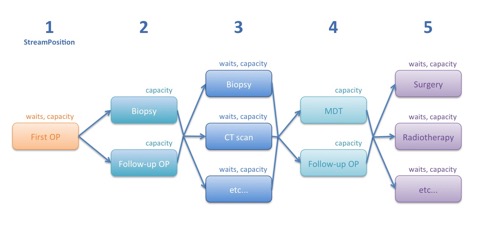
Next steps on the NHS Five Year Forward View
31/03/2017by Rob Findlay
Today NHS England published “Next steps on the NHS Five Year Forward View” with the following purpose:
The NHS Five Year Forward View set out why improvements were needed on our triple aim of better health, better care, and better value. This Plan concentrates on what will be achieved over the next two years, and how the Forward View’s goals will be implemented.
Referral-to-treatment (RTT) waiting times have been demoted, with A&E and cancer waiting times coming to the fore. There is also a new and welcome focus on separating ‘hot’ and ‘cold’ beds, and on theatre productivity (which was mysteriously absent from Lord Carter’s report on efficiency).
Here are the key quotes about these areas (my emphasis below):
Within a given funding envelope there are always limits to what can and cannot be done. While the NHS and the Government remain committed to short waits for routine operations, our new Mandate rightly recognises that there is likely to be continued pressure on waiting times for routine care and some providers’ waiting times will grow.
…given multiple calls on the constrained NHS funding growth over the next couple of years, elective volumes are likely to expand at a slower rate than implied by a 92% RTT incomplete pathway target.
From April 2017 the rules governing the performance element of the £1.8 billion Sustainability and Transformation Fund (STF) for acute trusts that relates to A&E will be amended in agreement with Department of Health and HM Treasury.
We will focus specifically on the cancer 62-day from referral to treatment standard ahead of the introduction of the new standard to give patients a definitive diagnosis within 28 days by 2020. Performance incentives for achievement of the cancer 62-day waiting standard will be applied to extra funding available to our cancer alliances.
…we will in principle support well-designed and affordable STP proposals that seek to split ‘hot’ emergency and urgent care from ‘cold’ planned surgery clinical facilities so as to allow efficient use of beds for planned surgery, avoiding the risk of cancelled operations from emergency admissions.
Since most elective hospital admissions are daycases and so not dependent on beds, hospitals will work to improve theatre productivity in line with GIRFT [“Getting it Right First Time”] benchmarks.
Although many people associate Gooroo Planner more with RTT waiting times, it is a highly capable system which covers all of these other areas too.
For instance, A&E pressures are largely about beds, so Gooroo Planner works out your bed requirements week by week throughout the year, based on your seasonal demand profiles (which it measures automatically).
Then the model gives you the option of automatically reprofiling your routine activity around the peaks and troughs in emergency and urgent demand, to achieve constant capacity. That analysis will show you whether ‘cold’ elective work sits comfortably alongside ‘hot’ services, or whether it would be better to split ‘cold’ surgery out into separate or ring-fenced facilities.
Cancer pathways are complex, but fortunately Gooroo Planner is designed to track demand and activity along complex clinical pathways like cancer and work out the capacity and the sustainable backlog at each stage. For instance, a prostate cancer pathway can be simplified to five stages and modelled like this in Gooroo Planner:

Finally, Gooroo Planner includes comprehensive visual analysis of theatre productivity, so you can see the extent to which different services suffer from late starts, early/late finishes, and long turnaround times, and whether costly weekend work could be done during the main working week. You can even filter down to individual surgeons and see how many sessions they worked.
RTT waiting times targets haven’t gone away, of course, and they are a particular strength of Gooroo Planner. Now that financial penalties have been dropped, this is a safe opportunity to replace the old target-driven approaches to patient scheduling, and replace them with methods which are based on the needs of patients and address the root causes of long waits. Then you will be ideally placed when England’s lengthening waits become politically intolerable and there is a renewed drive to bring them back down again.
If you are already using Gooroo Planner then we will be happy to help you with this – it’s all part of the service. If you don’t have Gooroo Planner yet then please get in touch for a free on-site demonstration.
Return to Post Index
Leave a Reply
You must be logged in to post a comment.